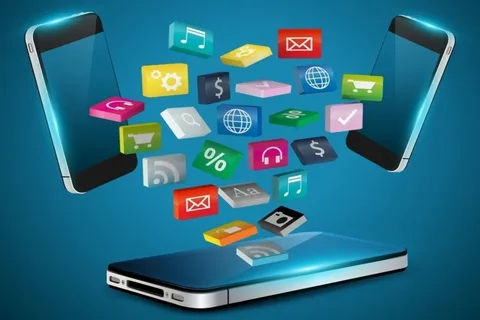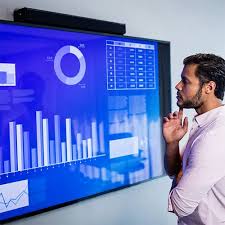Over the past few years, technology has changed the face of early childhood education. Technology can be used as a tool in early childhood education to help students learn effectively and with fun. When combined with interactive media, it greatly influences how young children learn and develop. It gives children a fun, safe space to play, express themselves, and develop their abilities.
Even though most people would probably agree that spending too much time on a screen gadget can be harmful. However, there are some Child Monitoring Apps available too that can help you monitor your child’s on-screen time. Technology can support young children’s academic and developmental achievement when used properly. So, here’s how you can use technology for the better learning of your child.
How Can Technology Help Children Learn?
You can incorporate technology into your child’s learning in a variety of ways. These days, you can access smart devices with games, apps, digital books, and more. But how do you manage all the technology available? Let’s find out.
1. Quick Information Exchange
We can always get the information we need on our phones, tablets, and PCs thanks to the Internet. We can go beyond the limitations of time-space notions and go as far as we wish to go in order to acquire or impart knowledge to others. With technology, we are not going to wait for the information to arrive before approaching him. The advantage for our kids is crucial to their quick learning.
2. Developing Basic Skills
You must have observed a decline in children’s literacy at an earlier age. A significant influence on this is provided by the computer and even instructional TV shows. Children can learn fundamental skills with the use of educational software. Apart from fundamental abilities, technology affects their capacity to cultivate imaginative thinking and establish connections between variables. Have you ever seen, for instance, how kids who play online games get better at a foreign language? You have to acknowledge that technology has a significant role in whether or not you believe that youngsters nowadays are brilliant.
3. Socializing
Of course, it is undeniable that kids who spend a lot of time on their phones, watch television, or play video games may struggle with socialization. Children who use technology sparingly, meanwhile, can use it as a tool for socialization. For instance, people who play particular games frequently could find friends in a social setting because they share interests. Similarly, people can acquire a new language and recognize a new culture by interacting with people online who speak different languages and cultural backgrounds.
4. Developing Special Skills
Technology is growing increasingly unbelievable. With the ability to paint on a tablet, we can now utilize a computer to create music with a vast orchestra. Why should these blessings not be extended to our children? Children can enhance their interests through a variety of applications, particularly with the tablets and phones we use. Your kids can find their abilities using these applications.
Furthermore, the child’s originality may be restricted by these tools’ portability. We can make life a lot easier for ourselves and our children if we learn how to use technology to its fullest potential, rather than running away from it at such a young age and living in fear. We can attain this high level of efficiency if we take the necessary precautions for them and help them understand the boundaries of technology use.
5. Promoting Digital Literacy
Given that we live in a technologically advanced world, it is imperative that kids learn how to use technology. When children are exposed to technology at a young age, they get accustomed to digital gadgets and applications and learn how to use different user interfaces with ease. Digital literacy includes abilities like problem-solving, critical thinking, and internet safety. By teaching kids to separate fact from fiction on the internet, we can prepare them to be responsible, intelligent digital citizens.
6. Access to a Variety of Educational Resources
There may occasionally be a shortage of traditional instructional resources, particularly in schools with tight budgets. On the other hand, a wide range of educational resources are available thanks to technology, such as virtual simulations, online courses, and e-books. The availability of a variety of educational resources guarantees that kids have access to a wide range of knowledge and information. It enables them to pursue their interests outside of the parameters of conventional classroom materials.
7. Fostering Imagination and Creativity
Technology may be a very effective tool for encouraging a child’s imagination and creativity. Children can use digital art programs, video editing tools, and animation software to express themselves artistically and make their ideas come to life. A passion for literature and narrative creation can also be sparked via creative writing and storytelling platforms available online. Technology helps children develop holistically by giving them the tools to explore their creative sides.
Conclusion
The integration of technology into children’s learning experiences offers exceptional opportunities for personalized, interactive, and engaging education. By leveraging technology, educators can harness the natural curiosity and adaptability of children to create dynamic learning environments that prepare them for the challenges of the future. As we continue to explore innovative ways to incorporate technology into education, it is crucial to remain mindful of the diverse needs and learning styles of each child. Through this, we can ensure that technology serves as a tool to enhance, rather than replace, the invaluable human elements of teaching and learning.




